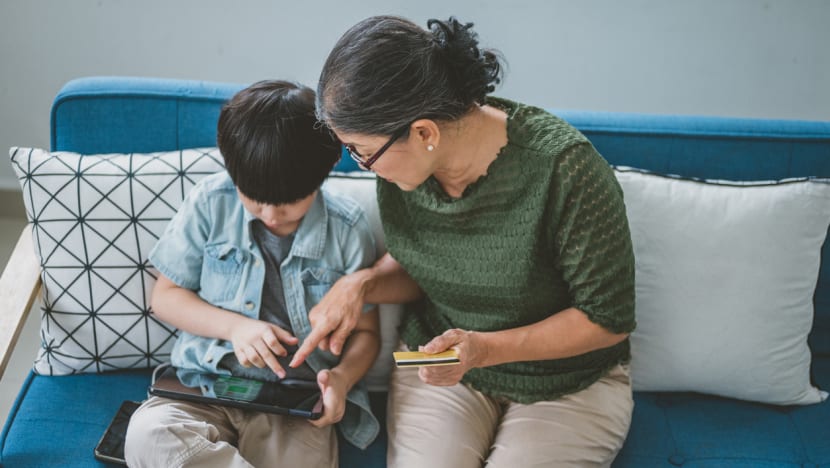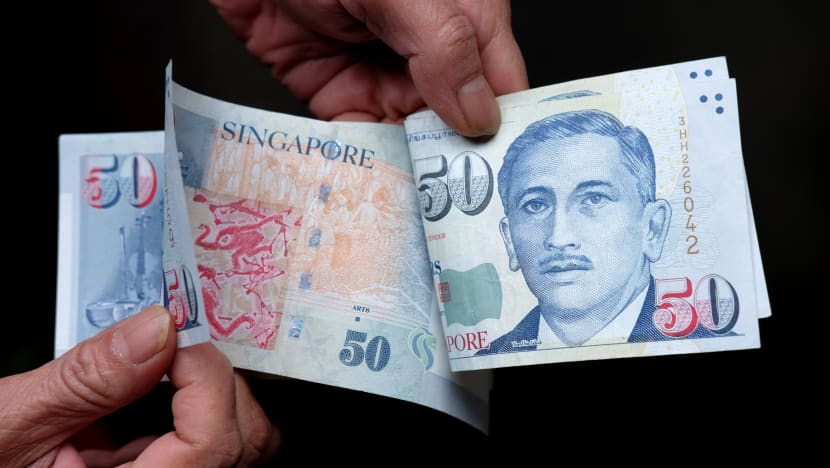Commentary: Children may develop a careless attitude towards money, as more transactions go cashless
The sheer convenience of paying for things with a few taps on the phone comes with a cost – our digitally native children can think money is like a token in a game, says Annie Tan.

(Photo: iStock/simon2579)
SINGAPORE: Growing up amid COVID-19, my pre-schooler has come to see our door as a kind of magic portal. Daily necessities, hot food, new clothes, books and toys have miraculously arrived through it.
If something runs out, one simply needs to press a button on the phone and hold tight for replenishment.
Thanks to seamless digital payment options such as PayNow, PayLah, PayPal and credit cards, even my three-year-old could order something if given access to a smartphone linked to a credit card – which she is not.
But linking credit or debit cards to our children’s accounts when they grow older is a reality many parents have to deal with.
And some have discovered this can lead to serious problems – like a father whose 18-year-old daughter racked up S$20,000 (US$14,865) on his credit card because she went on an in-game buying spree.
Like many children of this generation, my daughter already has an understanding of e-commerce, but fails to grasp the value of money involved.
She cannot imagine the time and effort it takes for a piece of clothing or a simple box of cereal to be made, then shipped halfway across the world to her doorstep and the hands making it happen. Nor is she aware of what her parents endure to pay for things.
This shift towards digitisation, e-commerce and ubiquitous apps – which make money abstract and payment easier – has vastly improved our lives. This is our new digital reality. Things arrive without you having to use physical money.
Such trends are extending to schools too. Already, many primary schools such as Bedok Green Primary School and Raffles Girls’ Primary School have adopted cashless payment via smartwatches, smartcards and EZ-Link cards for meals at the canteen, stationery at the bookshop.
Yet, as children get a taste of exchanging money for things digitally, parents must watch for red flags.
When they no longer have to empty their wallets to get that ice cream and see for themselves in physical terms something must be given in exchange for that item they want, what impact would this have on the financial literacy and financial health of a whole generation coming of age in this new marketplace?
IS DIGITAL MONEY AND E-COMMERCE REWIRING KIDS?
Recently, a friend shared that her primary school child could not even count money at first. He used to shove S$2 or S$5 bills to the canteen stall owner and expected her to return him the exact change.
The lack of money awareness may be more far-reaching than the inability to check one’s change. As children have less contact with physical notes through digital purchases, they can forget that what they are spending is real money.

Indeed, many modes of cashless payments are designed to make us forget. The ease of transactions reduces the “pain” of paying, and is found to affect even adults, not to mention children with less impulse control.
DBS Bank even wants us to “live more and bank less”.
Yet several studies have found that shoppers spent more when paying with credit cards instead of cash.
A 2018 University of Illinois study highlighted how the adoption of the mobile payment platform Alipay increased consumer spending by 2.4 per cent and the total transaction frequency by 23.5 per cent.
Since digitisation has made money increasingly abstract, if parents do not explain the basic premise of money, its connection between work and reward may be lost on children.
E-commerce compounds the issue. As digital purchases become faster and more frictionless, it is not just the grasp over the value of money that is lost, but also the value of the objects purchased with it.
Whether a canvas bag or corn, without understanding the time and effort it takes to buy something, working to earn the money to purchase the item, or even making a small effort to travel somewhere to purchase it, everyday items may seem more disposable than ever, exacerbating our throwaway culture.
Is this why our generation wastes so much food? A study by the Singapore Environment Council (SEC) published in 2019 estimated that the average household wastes the equivalent of 52 plates of nasi lemak in a single year. This amounts to S$342 million (US$254 million) worth of food waste across all households annually.
Conscious consumption is a vital lesson we need to impart to our kids today.
THE IMPACT OF MOBILE GAMES
As a child, one of the first games I played that involved the concept of money was Monopoly. The goal is to manage money and invest in good property for better long-term returns.
This was a simplified, but surprisingly somewhat accurate representation of money and investment.
Today, many of the most popular games children play such as Fortnite, Pokemon GO, Roblox and Clash of Clans distort the value of money. By pushing in-game purchases, they are designed to continually encourage increased spending. And by offering in-game currency, they blur the line with real money, causing some kids to think of money as a game.
Many news reports show children and youth racking up huge bills of thousands of dollars on their parents’ credit cards from in-app purchases. One young Singaporean gamer even shared with CNA how he spent S$20,000 (US$14,865) of his parents’ money on loot boxes.
What drove GameStop stock’s astronomical rise? What part did online trading platforms like Robinhood play? And can this happen in Singapore? CNA's Heart of the Matter examines:
DIGITAL MONEY IS FINITE
A Cambridge University study suggests, children develop many lifelong money habits by the age of seven.
Could children develop a careless and blasé attitude towards money? How do we teach them that digital money is nonetheless finite and real?
One way is to empower them to manage money digitally starting with their own bank account, and involve them in deposits, statement updates and withdrawals.
We should also teach them what happens when they tap “pay”, how it affects their bank account balance, where this money came from in the first place, and the time and labour it costs to make products that they purchase with it. As they grow older, let’s extend this education to credit, debt and scams.
A more engaging way to bring these lessons home for our digitally native children is to wield the very same power of technology, apps and gamification.
Financial literacy apps such as Bankaroo and FamZoo are designed to teach children to track earnings, savings and spending, and learn to budget. They also allow parents to offer monetary rewards for chores, incentivise savings with interest, and teach kids about the effect of compound interest.
Once a child understands the basics of digital banking and transactions, you can also empower them to use some of their allowance digitally via pre-paid cards or debit cards linked to limited funds that function as a guardrail.
Hold them accountable for their choices and avoid rushing in to do top-ups should they mismanage their funds.
To teach more complex financial concepts, apps like Financial Football, Biz Kids and You Are Here gamify topics like credit, debt, advertising techniques, taxes and financial markets.
FINANCIAL LITERACY FOR DIGITAL NATIVES
This rapid digital shift is unchartered territory for all of us.
As a child of the 80s, my idea of financial education was a piggy bank. Day after day, I would deposit loose change in it. Most of the time, I hardly knew how much money I had. But by the weight and jingle of the box, I felt reassured.
This slow and painstakingly daily effort taught me to value money and the objects I purchased with it.

Recently, when my daughter was gifted a piggy bank, I began to wonder if depositing coins in an opaque piggy bank and leaving it to accumulate in the dark teaches her enough about the complexities of financial literacy in 2022.
The way we amass money and spend it has changed irrevocably. It has been a long time since I heard anyone even say “cold hard cash” or “ka-ching” (the sound a cash register makes).
In the age of PayNow, GoFund and Crypto, the humble piggy bank may seem completely out of sync but perhaps this small old-fashioned item may be a powerful reminder for our children that money is real and not something that magically comes out of a shiny card or app, and a good starting point for their financial education.
With that foundation, they can then go on to embrace their full digital lives where saving money is more than just banking it in safely but a gateway into a crypto/robo-advisor/GoFund universe.
Annie Tan is a freelance writer based in Singapore.



















